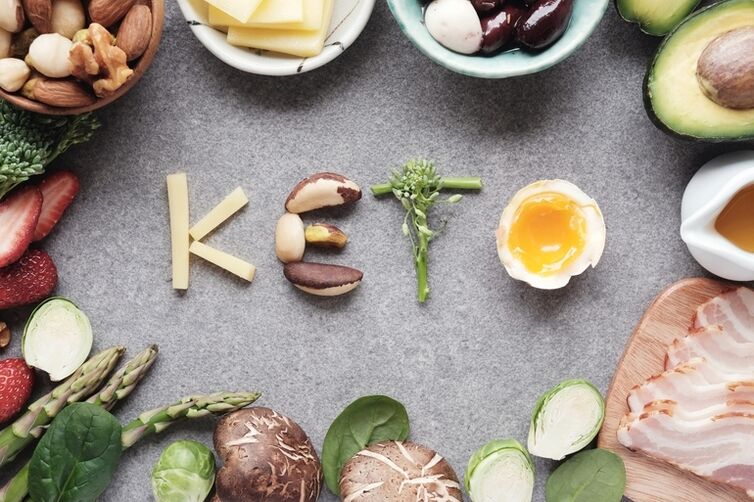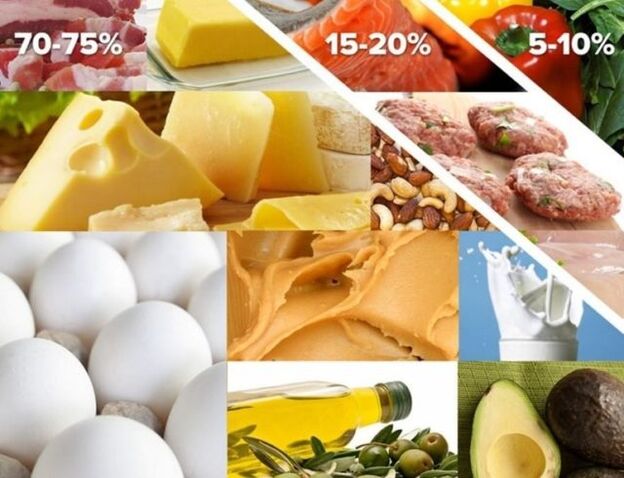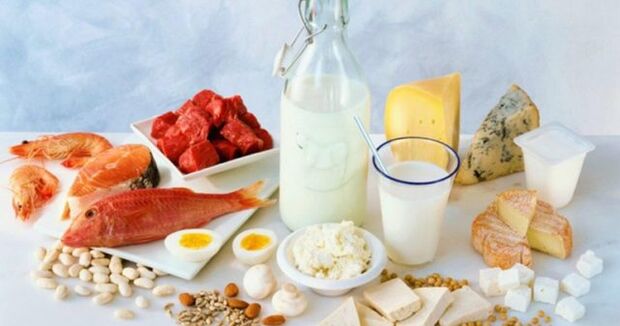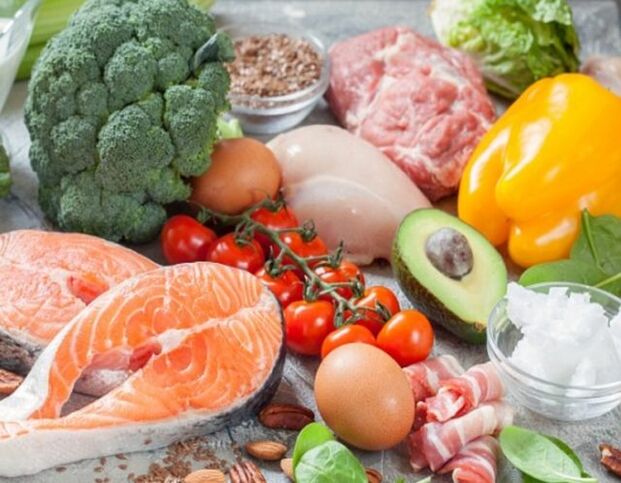The ketone diet was developed in 1921 to treat epilepsy. Later, bodybuilders began using it to build muscle relief. The use of fats as fuel is possible only with a reduced amount of carbohydrates and a small percentage of protein - these are the principles of the keto diet.
What is the Keto diet?
Ketogenic, ketone or keto diet (keto) is a diet low in carbohydrates, moderate in protein and high in fat.
When carbohydrates are consumed, they lead to glucose production and insulin production. Glucose is most easily consumed by the body as fuel. Insulin is needed for glucose to enter cells. In these cases, fats remain unclaimed and only accumulate. But if carbohydrates are reduced, the body is forced to enter a state of ketosis - a natural process when the body begins to use fats as fuel.

In the liver, when glucose is deficient, ketone bodies are formed from free fatty acids. Ketones or ketone bodies are molecules that carry energy for the body to function. The goal of keto is to become such a state.
There are 4 types, 3 of which are used by athletes, and one is used by all other keto supporters:
- Standard: basic keto - ratio in% BJU - 20: 75: 5.
- Purposeful: Exercise increases the amount of carbohydrates during exercise.
- Cyclic: Increased carbohydrate intake, for example on weekends.
- High protein content: instead of decreasing, protein increases to about 35%. The total ratio of BJU becomes - 35: 60: 5.
Approved products
The following products are allowed for consumption:
- Any meat: veal, pork, poultry, etc. Do not remove fat from meat and chicken.
- In chickens, thighs and legs are preferred.
- Fish and seafood: any, but fatty fish is better - salmon, mackerel, sardines, anchovies, salmon and herring, shrimp and squid.
- Eggs: in any form.
- Natural fats: lard and lard, frying ghee, salted butter, coconut oil, avocado, flaxseed and olive oil for salads.
- Night vegetables: kale, zucchini, eggplant, asparagus, olives, spinach, lettuce, green vegetables and leafy vegetables.
- Mushrooms: any.
- Dairy products only with high fat content: whole milk (more than 3%), heavy cream (20-40%), sour cream 25%, cottage cheese, Greek yogurt, fatty hard cheeses.
- Oil nuts and seeds: macadamia nuts, cashews, walnuts, sunflower seeds, pumpkin seeds, etc.
- Berries: in small quantities - raspberries, blackberries, blueberries.

Occasionally allowed:
- Alcohol: dry wines, unsweetened spirits (gin, rum, whiskey, vodka), unsweetened cocktails.
- Dark chocolate: very moderate, with over 70% cocoa.
- Water, coffee with cream, tea and herbal teas to your liking.
- Chicken soup or broth cubes with at least 1 g of sodium. When carbohydrates are reduced, glycogen is actively consumed. For its 1 g, 3 g of water is needed. With it, the sodium that the body needs disappears. According to nutritionists, chicken soup is indispensable in this diet because it provides the body with sodium.
Prohibited products:
- Sweets - sugar, candy, cakes, ice cream, honey, maple syrup, agave.
- Sweet drinks - carbonated drinks, juices, coffee with predominant milk, beer, etc.
- Cereals, grains and rice are rich in carbohydrates.
- Sweet fruits - bananas, apples, grapes, oranges, pears, mangoes, pineapples, etc.
- Beans are rich in carbohydrates.
- Potatoes are rich in starch.
- Shopping sauces - ketchup and barbecue sauce.
- Margarine - a complete lack of benefits.
- Artificial trans fats - from time to time worsen health.
Bitan! The more restrictions (less than 15 g of carbohydrates per day), the faster a person will enter a state of ketosis.
Keto diet: menu
> zxtable border = "1" cellpadding = "0" >Who is forbidden such a diet
Keto diet is contraindicated for:
- diabetes
- hypertension;
- hypercholesterolemia;
- kidney and gastrointestinal tract diseases;
- decompensation of cardiac activity;
- during pregnancy and lactation.

Benefits and harms of keto diet
Benefits of a child:
- effectively solves the problem of weight loss, muscle gain, dehydration;
- regulates blood sugar levels;
- Helps manage type 2 diabetes
- improves cognitive abilities;
- normalizes cholesterol and blood pressure;
- cleanses the skin of acne;
- helps with epilepsy to reduce the number of anticonvulsants taken;
- useful in Alzheimer's and Parkinson's disease;
- not financially expensive;
- Meals are not difficult to prepare.
Disadvantages:
- low carb, unbalanced
- it is not shown to everyone;
- reduces work capacity and memory.
Nutritionists' opinion on the keto diet
The emphasis of the keto diet is on protein and fatty foods, with extremely low fiber content. This is filled with bloating and heaviness in the abdomen, constipation. In addition, the intestines are colonized by pathogenic microorganisms, resulting in dysbacteriosis. Immunity is reduced. To avoid such problems, fiber should be consumed at least to a minimum - cabbage, apples, sour grapes.
The big minus is the lack of carbohydrates, the body can react to this with an inadequate reaction.
If physical activity is higher than the body's ability, it can cause hypoglycemia in the form of weakness, drop in pressure, dizziness, nausea, fainting and collapse. To prevent this, it is better to use juices and semi-sweet fruits during snacks, and when the first signs of hypoglycemia appear, drink tea with honey.

Glucose deficiency reduces brain function. Cognitive components are especially affected - attention, concentration, memory. After reaching the ketosis phase, they will partially recover, but the level still does not reach the previous norm. Therefore, when taking exams, hard mental work, it is better not to use this diet.
A ketogenic diet can lead to kidney stones, dehydration, elevated blood cholesterol levels, constipation and gout attacks. Keto is missing essential minerals and vitamins, so it is necessary to take vitamin complexes.
Keto will, of course, improve the body and shift the metabolism and lose weight, but the transition to such a distinctive diet is quite difficult and requires consultation with a doctor. The Keto diet is not for everyone. Only a doctor, after checking the current condition, can say whether it is allowed to start a diet.






























